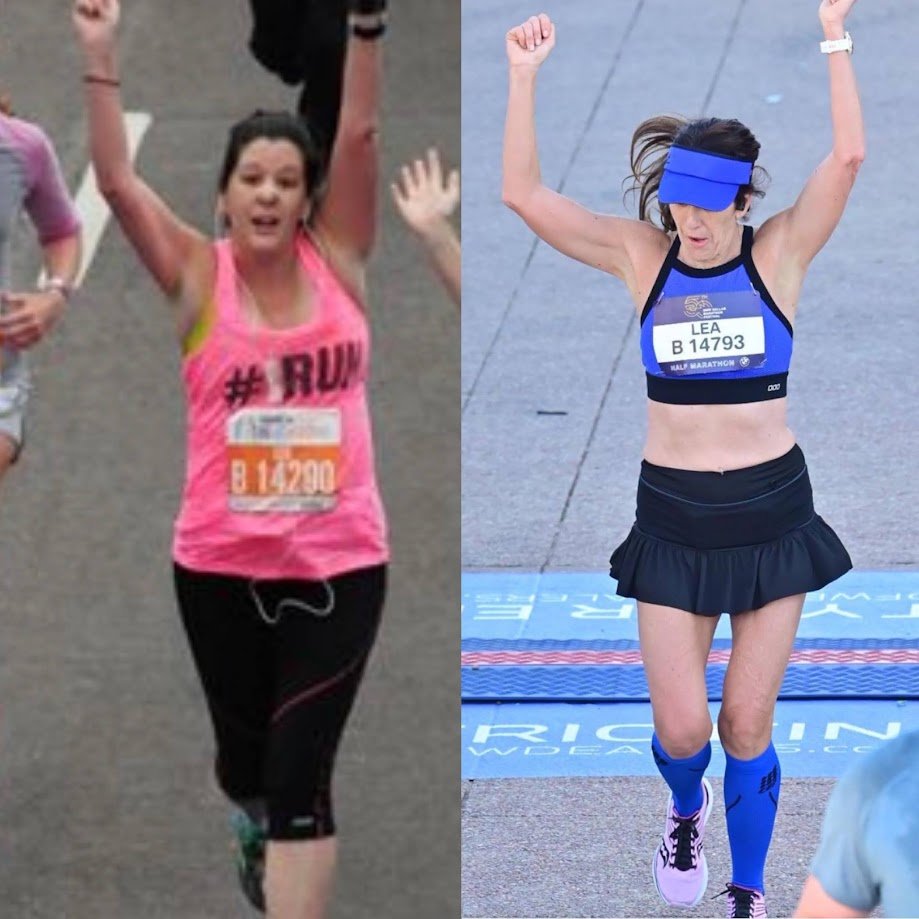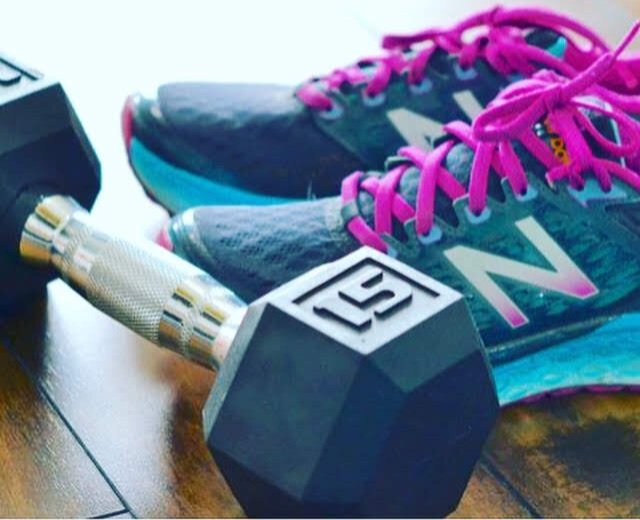Do you have reasons for missing workouts? Or are you making excuses? Do you know how to tell the difference? In this post, I will help you discern between excuses and reasons so that you can move forward in your training despite obstacles, fears, and setbacks.
Online Speed Training with Coach Lea - August 2022
Work with coach Lea for four weeks to get the exact strategies you need to improve your pace over time. Includes individualized pace suggestions based on your history and experience, weekly running workouts for four weeks, and coaching. Receive education on training, recovery, nutrition, and lifestyle habits to maximize results. Begins August 1, 2022
Do What You Can, With What You've Got, Where You Are: Run Cowtown Edition
Should You Start a Run Streak? When Should you Stop a Run Streak? Why I Stopped Streaking After 640 Days
Should You Start a Run Streak? When Should you Stop a Run Streak? Why I Stopped Streaking After 640 Days.
Run streak day 640 was the last day of my running streak. I call it my 'Rona run streak because I started it near the beginning of the shutdowns as a way to make sure I kept moving and stayed motivated during a time of high stress and rapidly changing schedules and environments.
What's a run streak? Don't worry; it doesn't have anything to do with not wearing clothing.
A person on a streak runs at least one mile a day for an extended period, maybe for a month, a season, a year, or more. There is a dude that's been streaking for over 52 years! In comparison, that makes my 640 days seem quite paltry.
Neither snow nor rain nor heat nor gloom of night stays these runners from their streak.
As a coach, run streaking is my "Do as I say, not as I do" speech to most clients. But I am not a total hypocrite; run streaks can be appropriate for some runners.
I am a firm believer in rest days and take them quite seriously in my training. In fitness, improvements happen during the recovery period, not during the workout. So if you don't allow time to recover, you don't improve (and you risk regression, burnout, or injury).
Even though I run streak, I honestly don't recommend it for most runners. So how do I reconcile my advice to other runners and my actions?
Run streaks can be safe and fun under the right circumstances, but there are a few standards and rules I recommend you follow before deciding to start a streak. Of course, there are exceptions to every rule; but I created these with safety and longevity in mind for the average runner. Some of these might not apply to you if you won the genetic lottery.
You must be an experienced runner with many months or years of consistent running. I never recommend run streaks for new runners; it's simply too risky.
It's best if you are currently running at least 15-20 miles per week and are willing to reduce your overall weekly volume at first as you start your streak. I recommend beginning with one mile a day for the first week and slowly adding a mile or two a week to your regular runs over the next few weeks to help your body adjust to the higher frequency. Starting with a lower weekly volume than usual can help avoid injury as your body adapts. Just adding more miles to your regular rest days is generally not a safe or effective way to start a streak.
You should be willing to run at least one or two (or more if needed) one mile days per week and run those days at a slower pace. These days are the recovery days for an experienced runner. One slow mile does not put a lot of additional stress on an experienced runner's body. Skipping these easy days can be detrimental to success for many runners.
It's best not to streak if you are a highly competitive runner or starting a full marathon (or longer) training cycle. High volume or high-intensity running needs more rest and recovery than lower volume and lower intensity workouts. In these scenarios, you could be sacrificing overall performance or risking injury by inserting a run streak into your training.
You must not get emotionally attached to the streak. I am the first to admit that this is challenging, especially after completing months or years of a daily streak. You must be willing to abandon the streak at any sign of injury, overtraining, or burnout. It doesn't serve any purpose to limp through a mile in pain for the sake of an arbitrary streak. You could cause more damage and worsen an injury if you ignore your body's pain signals.
You must be eating enough to fuel these workouts because undereating and run streaking together is a recipe for disaster. While macro percentage needs may look different for individual runners, most will do well with balanced carbohydrates, protein, and fat in their diets.
Runners who streak will be most successful if they can keep their life stress low and get at least eight hours of sleep per night. If this is not possible, it's probably best to streak when your life circumstances allow prioritizing sleep and stress management.
Runners with an obsessive, perfectionist or highly competitive personality are usually best off to skip the streaking. You know yourself and your tendencies better than anyone. A runner who would likely ignore the body's signals to stop to slow down or have a 'complete at any cost' mindset is better off not starting a streak in the first place.
I successfully streaked for 640 days. I ran through the rain, dark, cold, snow, and extreme heat. I ran on vacation and while traveling (which admittedly didn't happen a lot these last two years). I ran when it was inconvenient and didn't feel like it and when I was too tired. I ran on the street, on the trails, at the beach, and on my treadmill. Once I committed, I stuck with it. After a few months, it became harder not to run because I would think, "I don't want to do this today," but I also didn't want to stop the streak that day either, so the run always won.
I never got sick or dealt with any injuries during this time, as these events would have brought my streak to a halt.
So you may be wondering why did my streak end after 640 days?
My husband and I walked our two dogs on their leashes as we do in the mornings, and two loose dogs came at us aggressively. My husband tried to keep the three bigger dogs apart, and I held our smaller but muscular 40 lb dog back when his leash failed! I wrestled him on the ground to keep him away from getting involved with the dog fight. He was fighting me to join in the "fun," which was quite taxing. A car passing by saw the commotion and stopped and helped, and the owners of the aggressive dogs (finally) took them away.
No one, including the dogs, was seriously hurt; they just were worked up. We all walked away unscathed, so I thought.
We’re innocent!
Two days later, I started to feel some soreness in my left hip and a tightness in my left chest (a bruised rib, perhaps?) when breathing heavily, laughing or coughing. I reduced my running volume to one mile per day to keep the streak alive, but the soreness was not improving; it was getting worse. After the third day of drastically reduced miles, I knew my streak was over.
Remember my rule above? You can't get emotionally attached. Rest and recovery have to be my priority right now. As a coach, I think to myself, if my client told me this exact scenario and asked my advice, what would I tell them? REST! No questions. Not, "Try one more day and see how it feels." Not, "Just keep running one mile days and hope for the best." Certainly not to ignore pain. So I made the hard but necessary decision to stop the streak even if it wasn't what I wanted to do.
It's over. It was a good run (pun intended), but smart runners listen to their bodies and do what is best for longevity in the sport.
I'd be remiss as a coach not to follow my good advice. I'm trying to stay positive, allow myself to recover, reassess, and keep moving forward towards other goals.
After nearly two years of running at least a mile a day, maybe a break is what I didn't know I needed to shake up my training.
I've been contemplating what this means for my goals, progress, and future training. While it's my nature to catastrophize, I am working to take it one day at a time and do whatever I can to feel good and stay positive for today, I can’t spend too much energy worrying about what tomorrow will bring.
Sometimes life gives us what we need, but wrapped in a package we don't understand. I'm using this mindset to brainstorm ways to make the most of the downtime.
Wishing you health and happiness,
Lea
Did you like this post? Do you know someone who might benefit? It helps me when you share with your friends and followers on Facebook, Twitter, or Pinterest.
Seven New Year's Running Resolutions to Improve Performance
I am not a huge fan of new year's resolutions.
People tend to set big goals to change their whole lives on January first, and usually, by the time February rolls around, they are back to their old habits. Have you ever tried this? Eat better: no sugar! no carbs! nothing with taste! Exercise more: one hour a day, six days a week, twice a day! But your brain revolts at the extreme change in routine, and you're back to doing what feels good in a week or so. Nothing changes because significant sweeping change is hard for humans.
I prefer to set goals with action steps all year long. Did you mess up on January third? No problem, January fourth is a new chance to get it right. The problem with resolutions is that they are usually too big, too much pressure to be perfect, and not enough allowance for unforeseen circumstances. All or nothing usually leads to nothing.
Even so, I wish I could bottle the hope, optimism, and desire to improve that many people feel in the new year. People are often ready for positive change, and it is an opportunity to evaluate habits for what can be improved. But any day of the year also offers that opportunity. Try to avoid the now-or-never trap of new year's goal setting.
In the spirit of the positive side of new year's resolutions, I put together some running resolutions that can help you improve your performance in the new year. We don't have to make sweeping changes to every area of our life; sometimes, minor tweaks to our habits can yield positive results and bring us closer to our goals. If you get it wrong one day, try again tomorrow. Failure only comes from quitting.
WARM-UP BEFORE EVERY RUN
1. A dynamic warm-up can improve performance and help avoid injuries. It only takes a few minutes to be effective and is a great habit to practice in the new year. Runners are notorious for skipping the warm-up. Be different, be better. Start with five minutes of dynamic movement before every run. Try one like this one!
PRIORITIZE REST AND RECOVERY
2. Rest and recovery go hand in hand. Sleep well, take rest days, and lots and lots of low-intensity days. Recovery is the piece of the puzzle that makes you a better athlete. If you don't recover, you don't improve. It's often overlooked or minimized in favor of more workouts, but proper recovery will improve your performance, reduce your injury risk and make running more enjoyable all around. How can you improve your habits to maximize recovery with adequate rest or more sleep?
BE CONSISTENT
3. Aim for consistency over sustained hard effort throughout the week. Take it easy some days, push hard on others, but stick to your commitments if you choose to make training a priority in your life. It may mean lowering the intensity or shortening the duration if you need a break outside your scheduled rest days. I give myself a fifteen-minute rule for those days I don't feel like working out. Give it fifteen minutes; if I am completely miserable, I can stop. Most of the time, once I get started, I feel good enough to finish the workout.
LIFT WEIGHTS
4. Seriously, runners, resistance training is a game-changer for running and life! Want better times, less chance of injury, better body composition, and to become stronger, physically and mentally? There is no substitute for strength training. Try just 15-20 minutes every other day to start. Need ideas? Start with this article on three strength training exercises every runner should do. Or try my ridiculously inexpensive 5-day strength training for runners challenge.
STOP COMPARING
5. Your training should be at your pace, and no one else cares as much as you do at how fast or slow you run. My fast pace might be your slow pace or vice versa. We should be training according to our bodies needs, based on experience, age, recovery needs, and goals, The paces of our social media friends are irrelevant to our training.
It's ok to compare your past performances to the present day to improve, but be careful about comparing yourself today to your college track glory days. As we age, we change, we gain a lot of wisdom, but our bodies may lose some of the abilities of younger runners. Run in the body you are in today. It's enough! How does this improve your running performance? By focusing on yourself and your abilities, you remove the distraction, unnecessary mental stress, and possible injury risk prevalent when trying to keep up with other runners.
EAT TO PERFORM
6. Eat! Eat! Eat! Runners need fuel to perform and to recover! Be mindful of what you consume, but be very careful of the slippery slope of restricting calories while training! Underfueling leads to poor performances and potential injuries over time. You may be able to get away with it for a period, but it always catches up with you. Don't be afraid to fuel! Aim for a serving of healthy carbs and protein around your workouts.
SLOW DOWN
7. Stop racing every workout. You'll get better results with an 80/20 approach. 80% of runs at an easy effort! Why? It allows better recovery at a higher volume! Higher volume running can lead to faster paces overall. The catch is if you run too much, too soon, without proper recovery, you can risk overtraining or injury. If you slowly add low-intensity miles to your weekly schedule, you can increase your volume without too much risk. The harder the effort, the more time your body needs to recover. So if every run is challenging your recovery systems, you never get the opportunity to improve. What does easy effort mean to you? If you can talk in full sentences (or sing the alphabet) without taking large gasps of air between words, you are probably running at an easy effort.
TAKE ACTION
Which of the above do you think will help you improve your running performance the most? I'd look at what you are not doing and start with one new habit or lifestyle change that will help get you there. Don't try to change everything at once. Start small, learn new habits, practice new behaviors and get used to these changes in your life. Work on a new practice once you feel confident that the behavior is becoming a habit (after several weeks, usually). Over time, the stacking of small habits can lead to those significant changes you hoped for in the new year.
Happy new year friends, I wish you an effortless stride, an optimistic mind, and the motivation to go after your running goals.
Did you like this post? Do you know someone who might benefit? It helps me when you share with your friends and followers on Facebook, Twitter, or Pinterest.
Questions? I’d love to help.
















